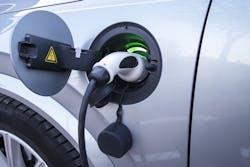High-Density EV Charging – Heat Maps, Microgrid Solutions and Do All Roads Lead Back to the Utility?
For those of us in this industry, we know that the real challenges to electrification of transportation is not the Uber fleet, but the technologies, capital investment and utility partnership required to electrify high-density users like fleet vehicles, distribution logistics centers, municipal and institutional transportation. This is where the truly daunting technical and utility challenges lie. It is not controversial to say that for EV fleet transformation to occur, electric utilities are and will continue to be the bottleneck. Not to demonize utilities, but their system planning, capital recovery, tariff structures and regulatory charters are not structured to support rapid deployment of high-density EV charging systems.
High-density EV charging
If anyone is familiar with the “heat maps” often used in sports to depict tendencies around, for example, basketball shot selection or in soccer (futball for some) for player movement, it is something like this that illustrates high-density fleet charging.
Think of something similar within a utility territory depicting the possibility of multiple fleet vehicle operators simultaneously wanting to electrify.
The possibility of high-density EV charging electrical demand is undoubtedly disrupting the sleep patterns of many utility planners as they grapple with the question “what if?” Because of where potential EV fleet vehicle centers are clustered and where the utility grid is constrained, neither the utility or the fleet vehicle operator can make informed and timely decisions or – more importantly – act on what each entity wants. The fleet vehicle operator wants to convert, the utility wants to accommodate (hopefully). The traditional method of a load application and system planning and system upgrades does not appear to support acceleration of high-density EV charging – but that is a completely different topic for another time. First movers would appear to have an advantage but that only serves the first mover. So, what we have is a slower transition than what may be desirable because of friction in the form of indecision on the part of the fleet vehicle operator and need for the utilities to supply supporting infrastructure within the bounds of their charters.
EV microgrid solution
Those of us in the industry know that part of the solution to electrifying high-density fleet vehicles is to design for-purpose EV microgrid systems with dedicated distributed energy resources that extract value from everything that a particular site and local utility has to offer. For instance, canopy and ground mount solar that optimizes the real estate for low-cost solar electricity. Battery energy storage to store and discharge electricity to arbitrage against grid costs and demand charges. Natural gas engines for resiliency and arbitrage. A technical solution is kind of the easy part.
Do all roads lead to the utility?
Unless a host wants to completely disconnect from the grid, the utility is obligated to serve the load of a host. As alluded to above, the local infrastructure may not support the demand of the site, leading to what might be a solution, which may be an EV microgrid. In the world that we are advocating, the EV microgrid provides value to both the fleet vehicle host and equally and, perhaps even more, to the utility.
But in practice this concept has a long way to go to extract the full value of its potential and unburden the utility from delivery constraints and system impacts. The answer is to recognize this value and develop tariffs and transactional systems that leverage the attributes of the EV microgrid: local capacity and demand reduction, distribution system stability, the capacity to equitably arbitrage and the like. For these attributes to be realized, significant investment in technology and data management is necessary. The recent Distributech conference in San Diego, California, should be an eye opener for anyone doubting this trend. But it may be fair to say that regulatory and pricing progress is lagging. Shocking, I know. But it is coming.








